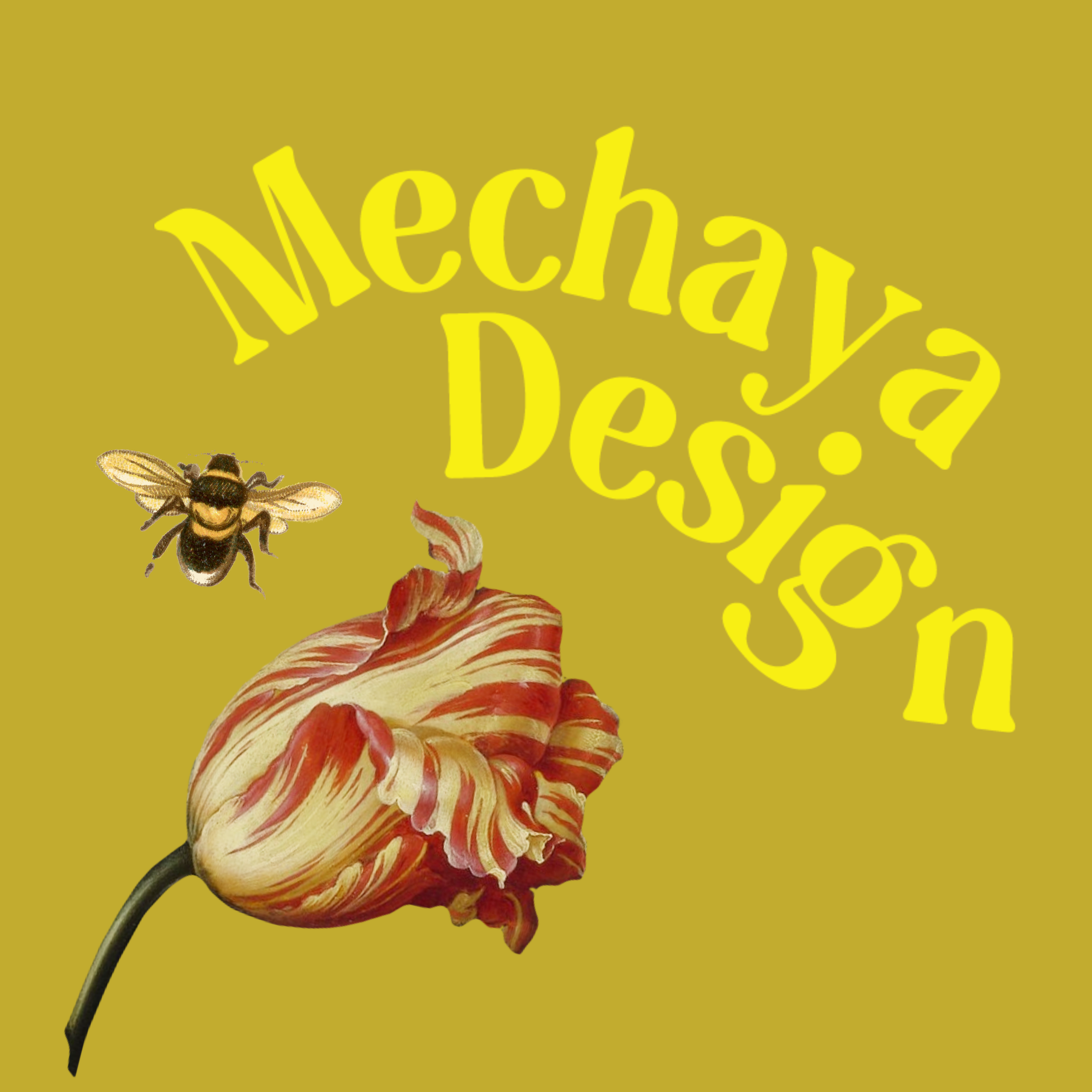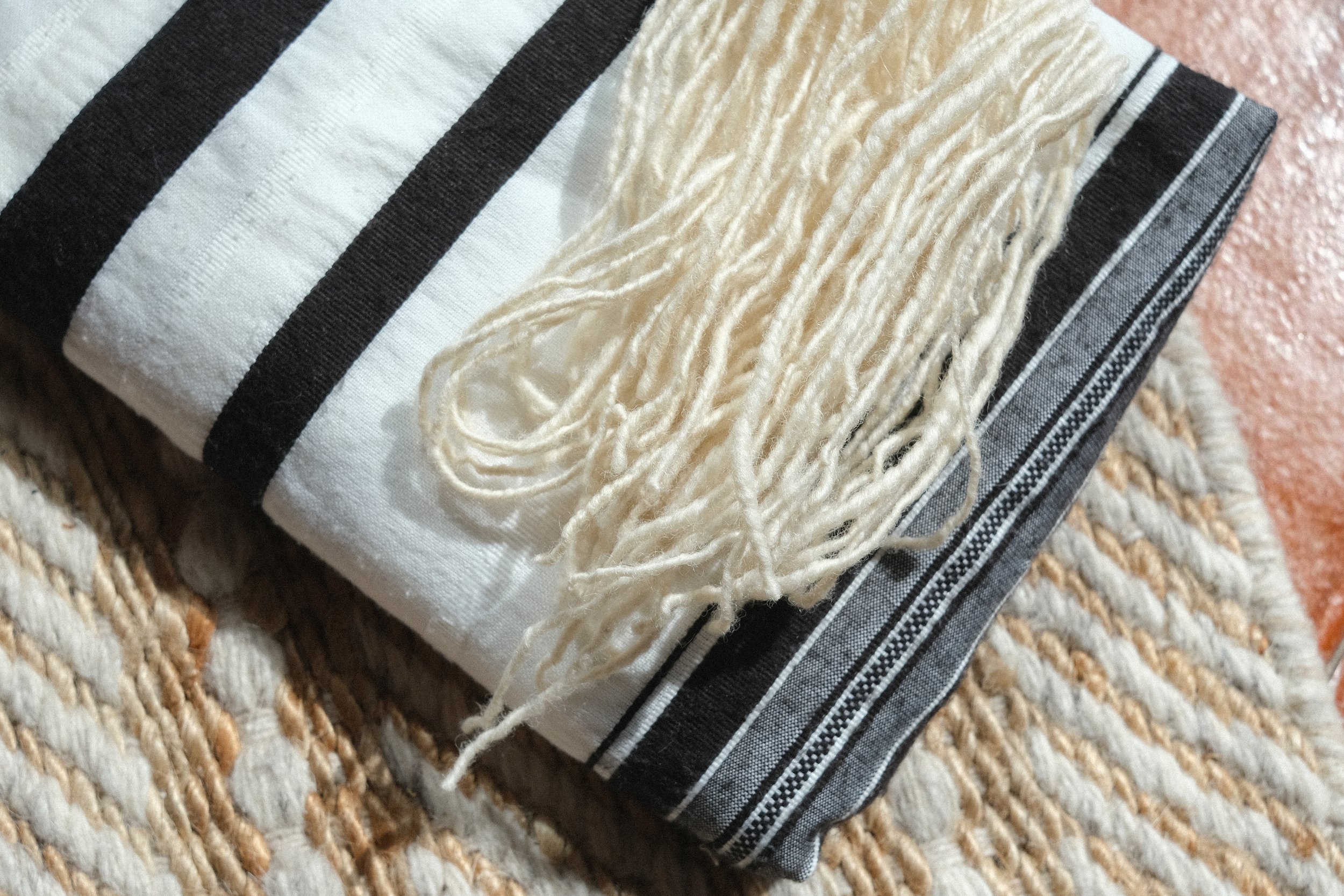Learn more about us!
(muh-CHAY-uh) - Yiddish - n. "Pleasure, enjoyment, a great joy"
Diasporist Judaica made in Spain with love.
Our materials
This project has been in my heart for a long time, but its not an accident that it has come to life in the small town of Mombeltràn, in the central Spanish countryside. Mechaya is an alliance between Jewish and non-Jewish artists and was born on the small family farm, Aurora Roja. What we create is connected intimately with the farm - I dreamed of making Kosher*, beautiful, and lovingly made tzitzit upon learning that many farmers in the region choose to burn wool rather than sell it, because it can only be sold at a loss. The small farm has been largely abandoned in Spain, with much of EU Agricultural policy providing the most support to the wealthy who own the most land. We use the wool from our beloved sheep, olive tree wood — harvested from regular pruning, and other materials to create our physical Judaica, the sale of which helps Aurora Roja continue to provide high quality, ecological fruit and vegetables to our local community.
Our Judaica:
-
All of our wool is harvested with love from our small flock of four sheep. The wool is combed and spun by hand with the express intention of becoming tzitzit. The wool is unadulterated with other fibers and free of insects. There are aspects of Tzitzit Kashrut that we cannot and will not adhere to, though. The wool is combed and spun by both a non-Jewish man, and a Jewish nonbinary person. We do not segregate by Jewish status or gender as specified in the Shulchan Aruch. Rather, we work as a team with the aim of creating beautiful tzitzit imbued with the love we have for the animals that provide the wool and the desire that they be used to honour the Divine, regardless of what that means to the wearer.
-
Sure! Blanquita, Doña Concha, Carlota and Bejo would be glad to welcome you on the farm, about an hour and a half drive from Madrid and an hour from Ávila. Please contact us through Instagram to discuss. The farm isn’t set up for guests yet, but we value experiential education and community visits.
-
It’s a word I love and I come from a mixed background, none of which is Sephardic. While I want to center the language and history of Sefarad, I acknowledge that I am coming from the outside. This is by definition a project that pulls from multiple Jewish cultures and histories while remaining grounded in our location in Castilla.
Grounded in place
The Jewish history of Mombeltrán has been researched and documented, though not in great detail. This is an area I continue to gather information about through research as well as seeking oral histories as I become more embedded in the town. In 1391, massacres swept centres of Jewish life across 70+ cities including the major cities of Cordoba, Sevilla, Valencia and Toledo.
Mombeltrán is located 80 km from the historic Jewish center of Ávila, where Moses de León, author of the Zohar famously lived. Ávila was a well-known safe haven from the antisemitic laws that defined the early reconquista and was spared the pogroms of 1391. While many Jews converted or fled to Morocco at this time, others traveled out of the cities into more provincial towns and it was during this time that the Jewish community established itself in Mombeltrán. It was attractive in part because it is important stop on trade routes because of its location at the base of Puerta del Pico, which was used to access to the highlands of the Sierra de Gredos as early as the Roman occupation of the region, making it a key location for collecting taxes and duties on goods.
For approximately 100 years, Jews lived here and were formally acknowledged in one of the most prosperous aljamas, or autonomous minority religious communities in the area. Jewish work was comprised of the typical tax-collection and providing financial services for the local Dukedom of Albuquerque, as well as being such major players in the weekly trading market that the town had to petition move the day so as not coincide with Shabbat.
The Jewish community settled around the market square, known as La Corredera. I have not yet seen or heard of documentation confirming the exact location of various community buildings, but at least one local historian claims that the synagogue and butcher were both located close to or in the same location as the Hospital de San Andrés, which serves as the town museum, tourist hub and cultural center.
It has also been noted that Jews participated in various agricultural activities including winemaking, and that there are records showing Jews with farms who sold the land to non-Jewish neighbors upon expulsion in 1492. At least one of these farm-owning Jews, Alonso Diaz de Acuña, upon arriving in Morocco, turned around promptly and undertook a harrowing journey back to Mombeltrán as a newly minted converso and repurchased his land in the town. It is reported that across the valley, the number of conversos (those who stayed rather than flee) was particularly high.
For me, it is this story that captures my imagination the most. In diaspora, Jews were often been barred from agriculture and land-ownership and thus, kept from building the close relationship to the land that runs so deep in our tradition. I think about Alonso, who sacrificed family and resources to return to his farm, choosing to hide or abandon his Jewishness — we can never know. So many conversos, or crypto-Jews practiced in secret that I like to imagine him with his vines and trees, inviting friends to observe Tu B´Shvat or using his male lambs to create decoy sausages. Maybe he managed to keep tzitzit made with wool from sheep raised in the valley. Either way, this man sacrificed everything to return to this corner of the world that I have come to love so dearly. With our rich soils and pleasant microclimate, the Barranco de Las Cinco Villas feels like heaven on earth. It was his home, and even though he clearly didn’t want to convert — the journey to Morocco from the middle of Spain was made for the express purpose of avoiding forced conversion — maybe the privilege of living openly paled in comparison to the sense of place he had here.
…Or maybe he committed some crime or was fleeing debts…truly I cannot know, and that is emblematic of Jewish history here. (Sorry if I’m slandering you, Alonso, I’m just keeping it real.)
How many families that remain here were conversos? How many people carried on odd family traditions whose Jewish origins were long forgotten? How many knew? I can see the Hospital de San Andrés from my desk, I can see the Castle built during the golden era of Jewish life here. The mountains are the same, I prune Olives that have been a part of the economy for centuries, I eat wine grapes off the vine in the autumn. I can feel that I am not the first Jew to love this land, and I want to help others fall in love with it, too.
It brings me great joy to co-create beautiful, sacred Jewish art and objects that are distinctly of this place.
Mechaya is my small contribution to the Jewish story of Mombeltrán, of Ávila, of Castilla. Thank you for your support, however you are able to provide it.
Whether through sharing our story or buying art and Judaica from the shop, you are part of this too.





